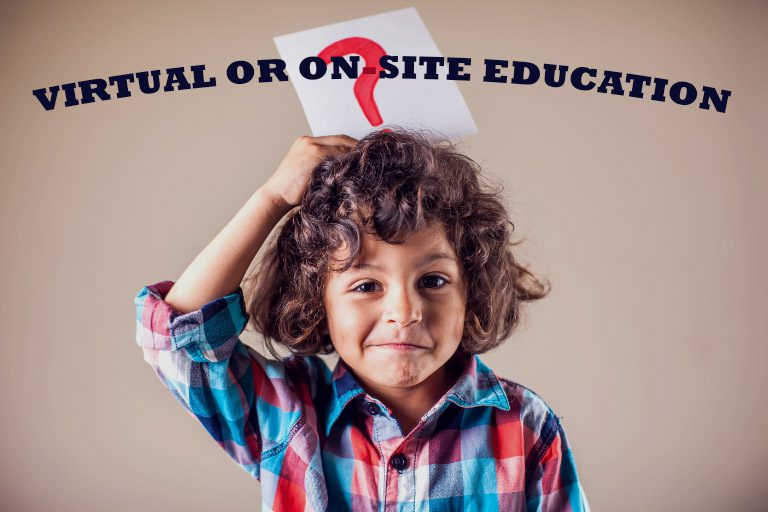Keys to a good virtual or on-site education
Does your child want to start his studies, but do not know if he should receive virtual or on-site education? Find out which of these two modalities is the best option in the educational field.
Education is essential in today’s society, thanks to it, it is possible to access a better level of awareness and, therefore, increase the living standards of people.
However, in recent years information technologies have made an interruption in the traditional educational model, breaking conventional schemes in training, giving access to new applications of ICT in learning.
What is virtual education?
Virtual education or online education refers to the development of learning activities through virtual or non-face-to-face environments, where the student can learn and interact with the teacher without being physically present in an educational center.
This is one of today’s new teaching methods and makes use of technology to educate remotely, eliminating the barriers of distance. That is why online education continues to gain ground over face-to-face education, as today many students have tried this type of teaching.

What is on-site education?
On-site or traditional education requires the mandatory presence of the student in a classroom, where learning is led by a teacher or professor, whose most common function is to explain, clarify and communicate ideas and experiences.
There is also the blended learning model, which does not require the student to be present for more than half of the time required in the curriculum, however, its tests are more comprehensive as well as the study sessions.
Differences between virtual and on-site education
If you do not know how to differentiate between virtual or on-site education, we tell you that they are different ways of learning. Although both seek quality teaching, each uses its methods, learning channels, and guidelines.
In this sense, online education uses the Internet and information and communication technologies (ICT) to provide students with educational tools such as chats, blogs, conferences, or shared documents, which make the course more dynamic and reinforced, making it more interactive and easier to follow. This asynchronous modality allows students to take classes, work, communicate and access content anywhere.
Virtual education is known for promoting student autonomy and curiosity, collaborative work, critical thinking, and self-taught learning.
While, in on-site education students attend a physical classroom where teaching and most of the learning takes place. In this type of learning, students play a passive role and adapt to the pace and method of the teacher, who becomes the source of reference.
Virtual or on-site education? Advantages of each
Both education modalities have benefits in their use, and it will depend on the view or aptitude of the person who uses it as his learning environment; with the method of home school programs children will be able to continue learning effectively.
Virtual education
Some of the virtual education pros that make it the most suitable educational modality are:
– Schedule flexibility: contents are always available and can be accessible at any time. It makes it possible to study several subjects at the same time.
– No geographical limitations: the best educational centers in the world are within everyone’s reach, since they can be accessed virtually.
– Cost reduction: enrollment fees are usually lower because fewer facilities are required; in addition, costs are lower for students by saving on supplies, uniforms, transportation costs, etc.
– Up-to-date content: all educational resources are online, which makes it easier to update them constantly, and they are usually convenient and easier to understand.
– Facilitates interaction between teacher and student: the virtual contact with the teacher allows making consultations and keeping a better communication in real-time.

On-site learning
Some positive aspects to be considered are:
– Continuous support from teachers: students have direct access to the teacher to clarify any doubts or tutoring with him/her.
– Opportunity to socialize: when students meet with other people in a physical classroom, they establish connections that can be helpful in the workplace.
– Fixed schedules: having to comply with established schedules, instills discipline to avoid friction with the teacher’s attention.
Nowadays, online education has become the preferred option for many people due to its flexibility, eliminating geographical barriers, and offering access to a more diverse educational offer.
At MGM Online Academy, we know how important an enriching educational experience is. That is why we offer you an easy and comfortable virtual platform to get closer to your child, meet their learning needs, and help them improve professionally.

